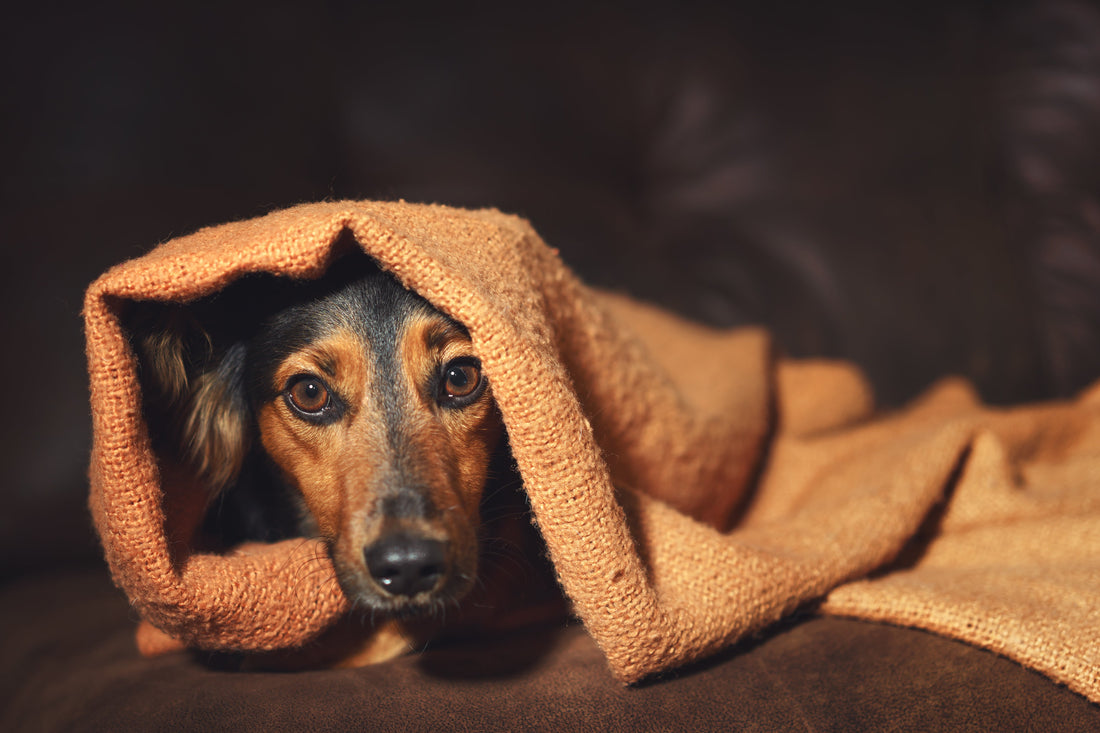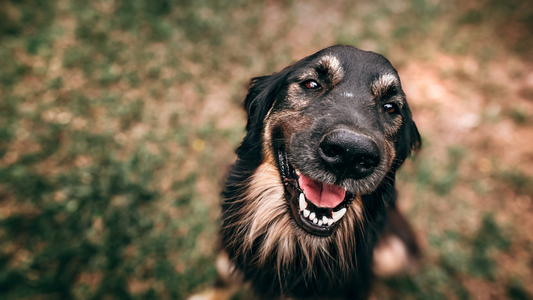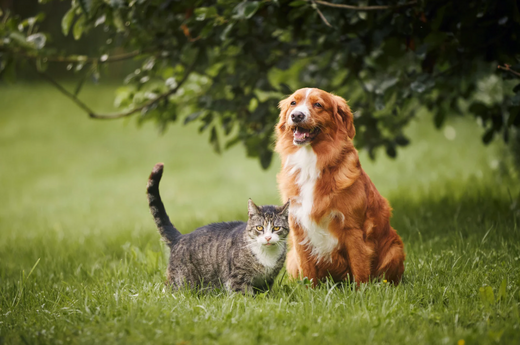Understanding canine fear and anxiety is essential for maintaining your dog's mental and physical health. Dogs can experience fear and anxiety for various reasons, and seeing the signs early can help you provide the appropriate care and support.
Understanding Canine Anxiety
Canine anxiety can stem from a variety of sources, including changes in the environment, loud noises, separation from their owners, and unfamiliar situations. Just like humans, dogs can exhibit anxiety in different ways, and understanding these signs is the first step in helping them feel safe and secure.
Common Causes of Anxiety in Dogs
Environmental Changes
Changes in the environment, such as moving to a new home, new family members, or even rearranging furniture, can trigger anxiety in dogs. They thrive on routine and predictability, so sudden changes can be unsettling.
Loud Noises
Loud noises from thunderstorms, fireworks, or construction can cause significant stress in dogs. Their heightened sense of hearing makes them more susceptible to noise-induced anxiety.
Separation Anxiety
Separation anxiety occurs when dogs become distressed upon being left alone. This is a common issue for dogs that are particularly attached to their owners and can result in destructive behaviours.
Unfamiliar Situations
New experiences, such as visits to the vet, car rides, or encounters with strangers, can also trigger anxiety. Dogs may feel threatened or unsure in unfamiliar situations, leading to anxiety.
Recognizing Signs of Anxiety in Dogs
Physical Symptoms
Dogs exhibit anxiety through various physical symptoms. These include panting, trembling, excessive drooling, and pacing. Some dogs may also exhibit more subtle signs, such as yawning, licking their lips, or avoiding eye contact.
Behavioural Changes
Anxiety can also manifest in changes in behaviour. Common signs include excessive barking, destructive behaviours (like chewing furniture or digging), and attempts to escape or hide. House soiling in a previously house-trained dog can also indicate anxiety.
Body Language
A dog's body language can provide valuable clues about their emotional state. Look for signs such as a tucked tail, flattened ears, and crouched posture. Dilated pupils and a tense body are also indicators of anxiety.
Managing Anxiety in Dogs
Create a Safe Space
Providing a safe and comfortable space for your dog can help alleviate anxiety. This can be a specific room or a crate where they feel secure. Make sure this space is quiet and away from any potential stressors.
Regular Exercise
Regular physical activity is essential for reducing anxiety. Exercise helps release pent-up energy and can have a calming effect on dogs. Engage your dog in daily walks, playtime, and other physical activities suitable for their age and breed.
Consistent Routine
Maintaining a consistent routine can help reduce anxiety in dogs. Predictable feeding times, walks, and play sessions provide structure and security. Try to keep changes in their routine to a minimum.
Training and Desensitisation
Training can be an effective way to manage anxiety. Positive reinforcement techniques can help build your dog's confidence and reduce anxiety triggers. Desensitisation, which involves gradually exposing your dog to the source of their anxiety in a controlled manner, can also be beneficial.
Use of Calming Products
There are various products available that can help reduce anxiety in dogs. These include calming sprays, diffusers, and supplements. Consult your vet before introducing any new products to ensure they are safe for your dog.
Professional Help
Consulting a Veterinarian
If your dog's anxiety is severe or persistent, it is essential to consult a veterinarian. They can rule out any underlying medical conditions and recommend appropriate treatment options, which may include medication.
Working with a Professional Trainer
A professional dog trainer or behaviourist can provide additional support for managing anxiety. They can create a customised training plan tailored to your dog's specific needs and help you implement effective strategies.
Behavior Modification Therapy
Behaviour modification therapy involves working with a professional to change your dog's response to anxiety triggers. This therapy focuses on positive reinforcement and gradual exposure to the anxiety-inducing stimulus.
Supporting Your Anxious Dog
Understanding and recognising the signs of anxiety in your dog is the first step in providing the necessary support. By creating a safe environment, maintaining a consistent routine, and seeking professional help when needed, you can help your dog manage their anxiety and lead a happier, more relaxed life.
Helping Your Dog Thrive
Helping your dog manage anxiety is crucial for their overall wellbeing. At Healthy Pet Co., we are dedicated to providing high-quality, vet-approved products and valuable information to support your pet's health. Explore our blog and resources for more tips and products to help your dog live their happiest, healthiest life.
Together, we can help your furry friends thrive.
Understanding canine fear and anxiety is essential for maintaining your dog's mental and physical health. Dogs can experience fear and anxiety for various reasons, and seeing the signs early can help you provide the appropriate care and support.
Understanding Canine Anxiety
Canine anxiety can stem from a variety of sources, including changes in the environment, loud noises, separation from their owners, and unfamiliar situations. Just like humans, dogs can exhibit anxiety in different ways, and understanding these signs is the first step in helping them feel safe and secure.
Common Causes of Anxiety in Dogs
Environmental Changes
Changes in the environment, such as moving to a new home, new family members, or even rearranging furniture, can trigger anxiety in dogs. They thrive on routine and predictability, so sudden changes can be unsettling.
Loud Noises
Loud noises from thunderstorms, fireworks, or construction can cause significant stress in dogs. Their heightened sense of hearing makes them more susceptible to noise-induced anxiety.
Separation Anxiety
Separation anxiety occurs when dogs become distressed upon being left alone. This is a common issue for dogs that are particularly attached to their owners and can result in destructive behaviours.
Unfamiliar Situations
New experiences, such as visits to the vet, car rides, or encounters with strangers, can also trigger anxiety. Dogs may feel threatened or unsure in unfamiliar situations, leading to anxiety.
Recognizing Signs of Anxiety in Dogs
Physical Symptoms
Dogs exhibit anxiety through various physical symptoms. These include panting, trembling, excessive drooling, and pacing. Some dogs may also exhibit more subtle signs, such as yawning, licking their lips, or avoiding eye contact.
Behavioural Changes
Anxiety can also manifest in changes in behaviour. Common signs include excessive barking, destructive behaviours (like chewing furniture or digging), and attempts to escape or hide. House soiling in a previously house-trained dog can also indicate anxiety.
Body Language
A dog's body language can provide valuable clues about their emotional state. Look for signs such as a tucked tail, flattened ears, and crouched posture. Dilated pupils and a tense body are also indicators of anxiety.
Managing Anxiety in Dogs
Create a Safe Space
Providing a safe and comfortable space for your dog can help alleviate anxiety. This can be a specific room or a crate where they feel secure. Make sure this space is quiet and away from any potential stressors.
Regular Exercise
Regular physical activity is essential for reducing anxiety. Exercise helps release pent-up energy and can have a calming effect on dogs. Engage your dog in daily walks, playtime, and other physical activities suitable for their age and breed.
Consistent Routine
Maintaining a consistent routine can help reduce anxiety in dogs. Predictable feeding times, walks, and play sessions provide structure and security. Try to keep changes in their routine to a minimum.
Training and Desensitisation
Training can be an effective way to manage anxiety. Positive reinforcement techniques can help build your dog's confidence and reduce anxiety triggers. Desensitisation, which involves gradually exposing your dog to the source of their anxiety in a controlled manner, can also be beneficial.
Use of Calming Products
There are various products available that can help reduce anxiety in dogs. These include calming sprays, diffusers, and supplements. Consult your vet before introducing any new products to ensure they are safe for your dog.
Professional Help
Consulting a Veterinarian
If your dog's anxiety is severe or persistent, it is essential to consult a veterinarian. They can rule out any underlying medical conditions and recommend appropriate treatment options, which may include medication.
Working with a Professional Trainer
A professional dog trainer or behaviourist can provide additional support for managing anxiety. They can create a customised training plan tailored to your dog's specific needs and help you implement effective strategies.
Behavior Modification Therapy
Behaviour modification therapy involves working with a professional to change your dog's response to anxiety triggers. This therapy focuses on positive reinforcement and gradual exposure to the anxiety-inducing stimulus.
Supporting Your Anxious Dog
Understanding and recognising the signs of anxiety in your dog is the first step in providing the necessary support. By creating a safe environment, maintaining a consistent routine, and seeking professional help when needed, you can help your dog manage their anxiety and lead a happier, more relaxed life.
Helping Your Dog Thrive
Helping your dog manage anxiety is crucial for their overall wellbeing. At Healthy Pet Co., we are dedicated to providing high-quality, vet-approved products and valuable information to support your pet's health. Explore our blog and resources for more tips and products to help your dog live their happiest, healthiest life.
Together, we can help your furry friends thrive.




